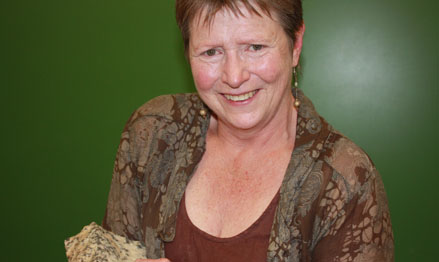Latest News Archive
Please select Category, Year, and then Month to display items
01 September 2020
|
Story Dr Nitha Ramnath
|
Photo Supplied
 The UFS’ Devina Harry was accepted into the Kader Asmal Fellowship Programme.
The UFS’ Devina Harry was accepted into the Kader Asmal Fellowship Programme.
The UFS’ own Devina Harry is set to travel to Ireland in September 2020 to begin a year-long Fellowship Programme for a Master of Business. As one of 20 students selected from the African continent, Devina was recently accepted into the Kader Asmal Fellowship Programme, which affords her the opportunity to study in Ireland during the 2020/21 academic year.
A research assistant in the Department of Business Management, Devina holds an Honours in Marketing. “I am very grateful to be awarded this scholarship and excited about this new journey,” says Devina, who is scheduled to begin the programme in October 2020. “I hope to come back to South Africa and contribute to my field of study,” she says.
Devina went through a rigorous application process and had to meet the criteria for selection, one of which is having a minimum average grade point of 75% for her honours.
Prof Brownhilder Nene, Head of Department: Business Management, gave Devina some words of encouragement: “You will never know how far you can go unless you try. Thank you, Devina, for stepping out of your comfort zone and getting this scholarship.”
The Kader Asmal Fellowship Programme is a South African strand of a broader Ireland-Africa Fellows Programme managed by the
Irish Department of Foreign Affairs and Trade. It was set up in 2012 in honour of the late
Professor Kader Asmal, and is a fully-funded scholarship opportunity for those who want to develop skills and knowledge to contribute to the achievement of the Sustainable Development Goals in South Africa.
Prof Tredoux turns theories regarding the formation of metals on its head
2013-09-17
|
 |
|
Prof Marian Tredoux
17 September 2013 |
The latest research conducted by Prof Marian Tredoux of the Department of Geology, in collaboration with her research assistant Bianca Kennedy and their colleagues in Germany, placed established theories regarding how minerals of the platinum-group of elements are formed, under close scrutiny.
The article on this research of which Prof Tredoux is a co-author – ‘Noble metal nanoclusters and nanoparticles precede mineral formation in magmatic sulphide melts’ – was published in Nature Communications on 6 September 2013. It is an online journal for research of the highest quality in the fields of biological, physical and chemical sciences.
This study found that atoms of platinum and arsenic create nanoclusters, long before the mineral sperrylite can crystallise. Thus, the platinum does not occur as a primary sulphur compound. The research was conducted at the Steinmann Institute of the University of Bonn, Germany, as well as here in Bloemfontein.
Monetary support from Inkaba yeAfrica – a German-South African multidisciplinary and intercultural Earth Science collaborative of the National Research Foundation (NRF) – made this research possible. Studies are now also being conducted on other metals in the precious metal group, specifically palladium, rhodium and ruthenium.
The discovery of the nanoclusters and the combination with arsenic can have far-reaching consequences for the platinum mine industry, if it can be utilised to recover a greater amount of platinum ore and therefore less wastage ending up in mine dumps. This will signify optimal mining of a scarce and valuable metal, one of South Africa’s most important export products.
For Prof Tredoux, the research results also prove thoughts she already had some twenty years ago around the forming of platinum minerals. “Researchers laughed in my face, but the evidence had to wait for the development of technology to prove it.” Young researchers were very excited at recent congresses about the findings, since the new models can bring new insights.
“Chemistry researchers have been talking about platinum element clusters in watery environments for quite a while, but it was thought that these would not appear in magmas (molten rock) due to the high temperatures (>1 000 degrees celsius).”
Prof Tredoux has already delivered lectures at congresses in Scotland, Hungary, Sweden and Italy on this research.
Read the article at: http://www.nature.com/ncomms/2013/130906/ncomms3405/full/ncomms3405.html